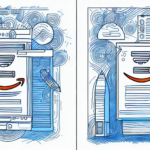Comprehensive Guide to FedEx Ground Insurance Rates in 2024
As an online seller, ensuring that your products are delivered safely to your customers is a crucial aspect of your business. Despite best efforts, some products may get lost, damaged, or stolen during transit. That's why having a reliable shipping insurance policy in place is essential. In this article, we'll delve into FedEx Ground insurance rates and provide everything you need to know to make informed decisions about insuring your shipments.
Comparing FedEx Ground Insurance with Other Shipping Insurance Options
Understanding the differences between FedEx Ground insurance and other shipping insurance options is vital for choosing the right coverage for your needs. Major shipping carriers like UPS, USPS, and FedEx offer insurance coverages to protect packages against damage or loss during transit.
FedEx Ground provides insurance coverage that protects shippers from loss or damage up to $100 per shipment by default. If the value of your package exceeds $100, you can purchase additional insurance, extending coverage up to $1,000 per shipment, or $2,500 with a FedEx account. In comparison, UPS offers a "Declared Value" insurance policy, calculated based on the package's declared value and weight.
Another significant difference lies in the claims process. FedEx Ground allows you to file claims online or by phone, typically processing them within 5-7 business days. UPS requires claims to be filed in writing, which may take up to 10 business days to process. Additionally, FedEx Ground offers a money-back guarantee for late deliveries, a feature not always available with other carriers.
Key Factors Influencing FedEx Ground Insurance Rates
Several factors can impact the cost of FedEx Ground insurance rates. Understanding these can help you manage your shipping expenses effectively:
- Declared Value of the Package: Higher value items require more substantial insurance coverage.
- Package Size and Weight: Larger and heavier packages are more prone to damage or loss.
- Destination: Shipping to remote or high-risk areas can increase insurance costs.
- Shipping Service Level: Faster shipping options may lead to higher insurance premiums.
- Type of Product: Items like electronics or fragile goods may necessitate additional insurance due to their susceptibility to damage.
- Packaging Quality: Well-packaged items reduce the risk of damage, potentially lowering insurance costs.
Proper packaging not only safeguards your products but also plays a crucial role in determining your insurance rates. Ensuring that packages are securely packed can minimize the risk of damage or loss, thereby affecting the overall cost of insurance.
Calculating the Cost of FedEx Ground Insurance
FedEx Ground insurance rates are primarily based on the declared value of the package. Rates typically range from $0.80 to $2.40 per $100 of declared value, depending on the level of coverage you choose. To determine the exact cost, you can utilize FedEx's online insurance calculator.
It's important to note that FedEx Ground insurance covers loss or damage to the package during transit only. It does not cover indirect or consequential losses, such as lost profits or business interruptions. Therefore, considering additional insurance for comprehensive coverage is advisable.
The type of item being shipped also influences insurance costs. For instance, shipping electronics or delicate items may require enhanced packaging or handling, increasing the cost of insurance. Accurately declaring the value of your items ensures that you receive appropriate coverage in case of a claim.
Understanding FedEx Ground Insurance Coverage Levels
FedEx Ground offers three levels of insurance coverage to cater to different shipping needs:
- Basic Coverage: Automatically included with the shipping cost, providing coverage up to $100 per shipment.
- Declared Value: Available for packages valued above $100, allowing you to purchase additional coverage based on the declared value and shipping destination.
- Additional Liability: For high-value items, this coverage extends up to $50,000 per package, with costs varying based on the item's value and destination.
It's crucial to remember that FedEx Ground's insurance coverage applies only to loss or damage during transit and excludes any damages or losses that occur after delivery. Additionally, certain items like cash, jewelry, and antiques are not eligible for coverage. Always verify with FedEx Ground before shipping to ensure your package qualifies for insurance.
Choosing the Right Level of Insurance Coverage
Selecting the appropriate insurance coverage for your packages involves considering several factors:
- Product Value: Ensure the coverage matches the item's value. Items over $100 should have additional insurance.
- Shipping Destination: High-risk or remote areas may require extra coverage to safeguard against potential loss or damage.
- Insurance Cost: Balance the cost of insurance with your overall shipping expenses to find the most cost-effective solution.
- Item Fragility: Fragile or easily breakable items may benefit from higher insurance coverage to protect against transit damage.
- Shipping Method: Different shipping methods offer varying levels of liability coverage; additional insurance may be necessary for full protection.
Properly assessing these factors ensures that you have adequate protection for your shipments without incurring unnecessary costs.
Step-by-Step Guide to Filing a FedEx Ground Insurance Claim
If your package is lost or damaged during transit, filing a claim with FedEx Ground is essential to receive compensation. Follow these steps to file a successful claim:
- Notify FedEx: Report the damage or loss within 60 days of the shipment date.
- Provide Documentation: Submit supporting documents, including the tracking number, proof of value, invoice or receipt, and photos of the damaged item.
- Cooperate with Investigation: Assist FedEx in their investigation to expedite the claim process.
- Receive Compensation: Once approved, you will receive compensation based on your coverage level.
Ensure that you declare the accurate value of your shipment and retain all necessary documentation to facilitate a smooth claims process.
Common Reasons for Denial of FedEx Ground Insurance Claims
Understanding why insurance claims may be denied can help you avoid common pitfalls:
- Inadequate Packaging: If the packaging is deemed insufficient to protect the item during transit, the claim may be denied.
- Insufficient Documentation: Missing or incomplete documentation, such as invoices or photos of the damage, can lead to denial.
- Missed Deadlines: Claims must be submitted within 60 days of the shipment date; delays can result in denial.
- Prohibited Items: Shipping restricted or prohibited items can invalidate insurance coverage.
- Force Majeure Events: Damage caused by events beyond FedEx's control, like natural disasters or acts of terrorism, may not be covered.
To minimize the risk of claim denial, ensure that you adhere to packaging guidelines, provide all necessary documentation, and file claims within the specified timeframe.
Best Practices for Packaging to Minimize Damage or Loss
Proper packaging is vital in reducing the risk of damage or loss during transit. Follow these guidelines to ensure your packages are well-protected:
- Use Sturdy Materials: Select boxes that can withstand the weight and size of your items and use high-quality wrapping materials.
- Avoid Overpacking or Underpacking: Ensure the packaging is appropriate for the item's size and weight, using sufficient padding to prevent movement.
- Accurate Labeling: Make sure shipping labels are visible, accurate, and free from damage.
- Proper Markings: Indicate if the contents are fragile or require the package to be kept upright.
Additionally, consider the climate and weather conditions during transit. For shipments traveling through extreme temperatures or adverse weather, adding extra insulation or protective materials can prevent damage.
Choosing the appropriate shipping method based on the item's nature and packaging materials further reduces the risk of damage or loss.
Strategies to Negotiate Lower FedEx Ground Insurance Rates
For frequent shippers, negotiating lower FedEx Ground insurance rates can lead to significant savings. Here are some effective strategies:
- Demonstrate Shipping Volume: Large shipping volumes can be leveraged to negotiate discounted insurance rates.
- Bulk Purchases: Insuring multiple items simultaneously may qualify you for bulk discounts.
- Negotiate Terms: Discuss terms such as deductibles or liability limits to achieve more favorable rates.
Another approach is to explore third-party insurance providers, which may offer competitive rates or more comprehensive coverage options compared to FedEx. Regularly reviewing and adjusting your shipping and insurance strategies ensures that your coverage remains aligned with your business needs while optimizing costs.
By understanding the factors that influence FedEx Ground insurance rates, the various coverage levels available, and the claims process, you can make informed decisions to protect your products during transit. Implementing best practices in packaging and exploring negotiation opportunities can further enhance your shipping efficiency and cost-effectiveness.






















